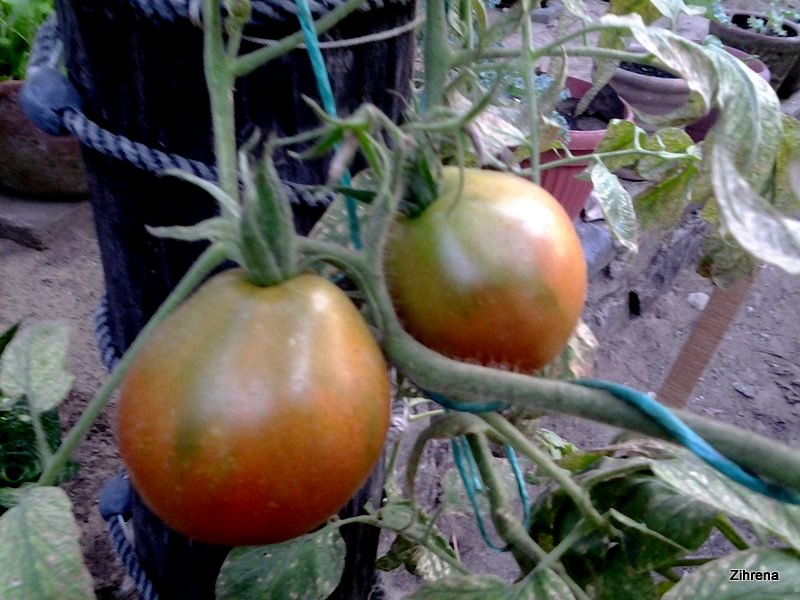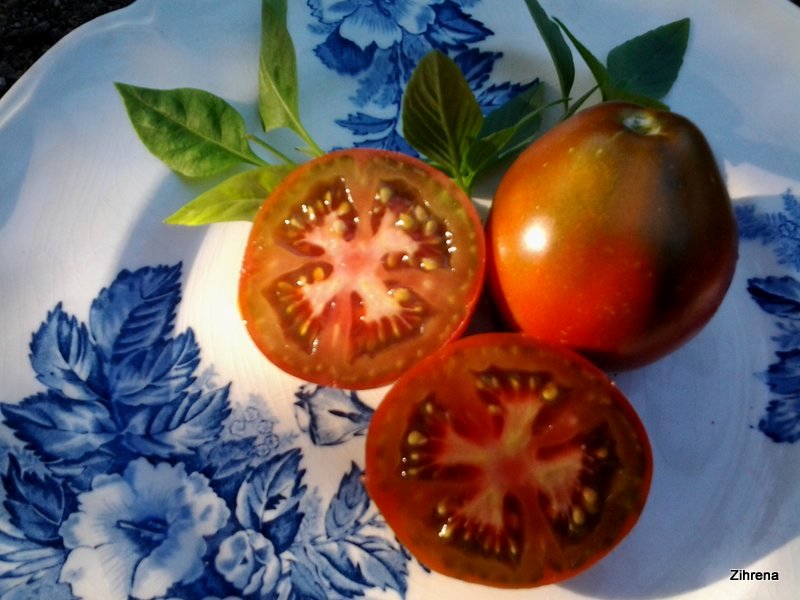This week, my Bedouin tomatoes began ripening on the vine so I’ve finally been able to give them a taste. I had started the plants from seed in individual pots on October 4 and transplanted them into their permanent home around the middle of November, some five weeks after planting. I moved the two starts into one fairly spacious pot that I set beside an old post to which I anchored the vining tomato plant.
I’ve been watching the pear-shaped fruits develop for some time now. That’s the thing with tomatoes in particular: they set fruit and then you wait and wait until one fine day you’re rewarded with a spectacular explosion of color that tells you that you can finally pluck them. I really do believe that much of the joy of gardening is that process of anticipation and build-up on the taste buds. These tomatoes started producing later than some of the other varieties I have in the garden. Bedouin tomatoes are supposed to be a relatively rare tomato with fruits that grow to between three and six ounces. They are indeterminate.

Bedouin tomato on the vine
So this morning I picked my first two Bedouins from my beach-side tropical container garden. I sliced one of the pretty red but green-tinged fruits and exposed the juicy, rich red flesh with blackish overtones. It looked luscious. I did the taste test (if that’s what you call crunching enthusiastically into half a freshly-picked tomato) and found it tangy, very tasty, and with a firm flesh, although the skin did seem a little tough. This specimen was somewhat less sweet than other vine-ripened tomatoes I’ve had, but that might be because I just barely let the thing get ripe before partaking of it. I think it might be a good tomato for making salsa.

Bedouin tomato taste test
By the way, the plate on which I photographed the tomatoes is the last remaining relic the first set of dishes I remember eating from as a child. It was the family china and I treasure this last piece of it I still have. It’s stamped “Khyber” and “Johnson Bros England” on the bottom. I’m not quite sure how it managed to make it all the way from Canada to Zihuatanejo, Mexico and still survive with only one insignificant chip on its scalloped edge.